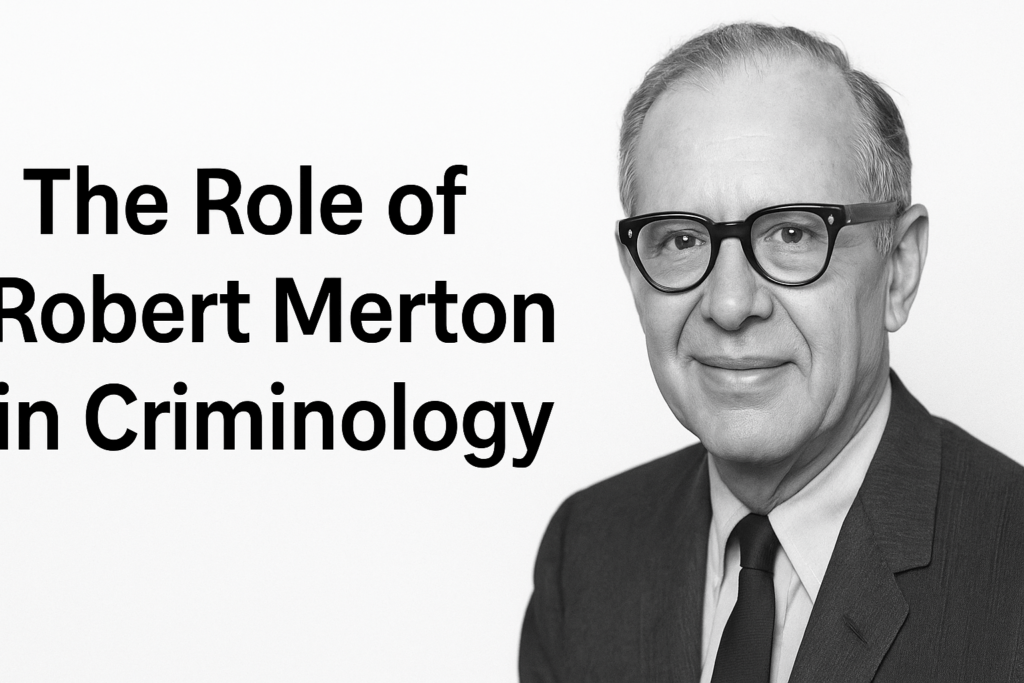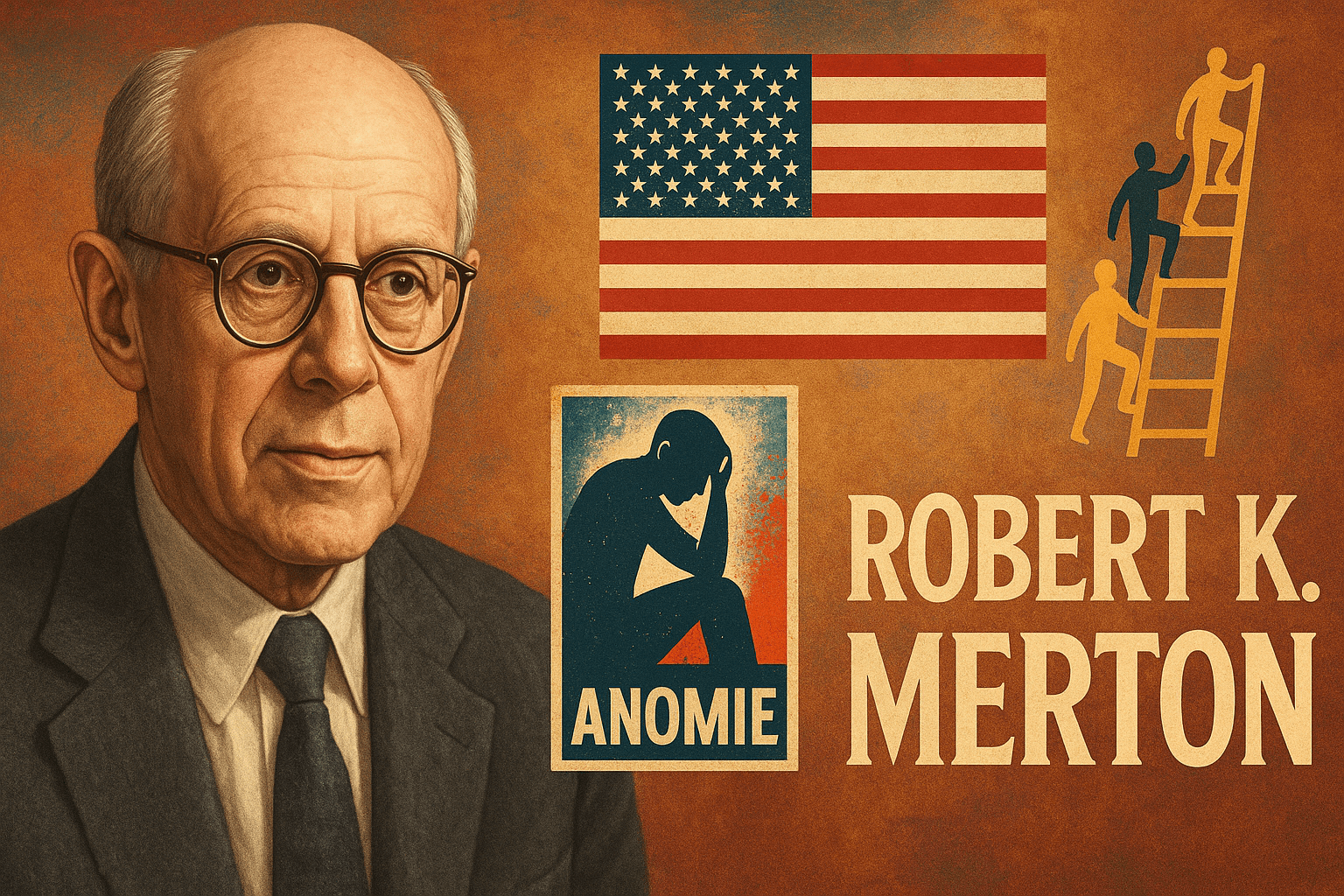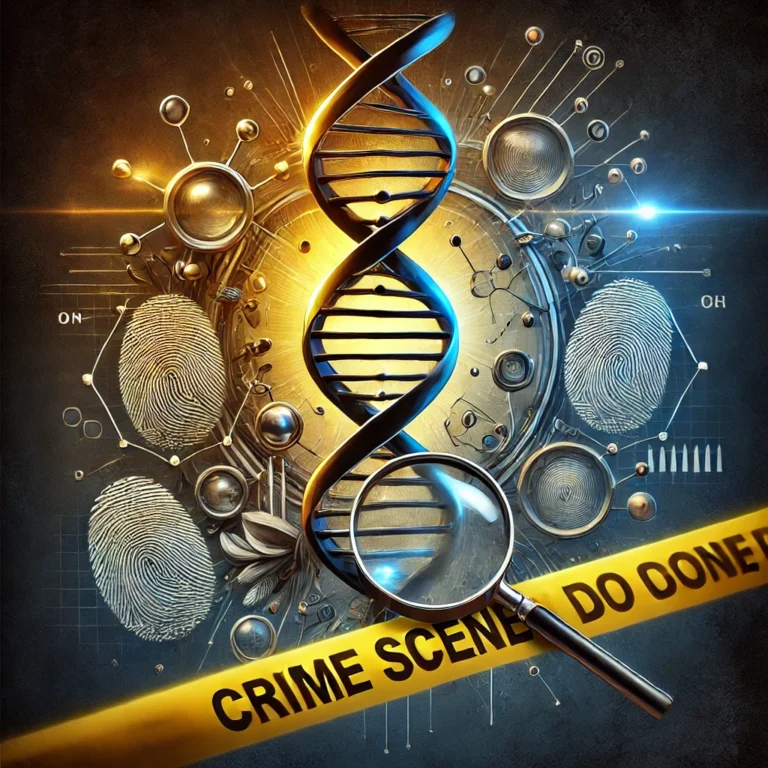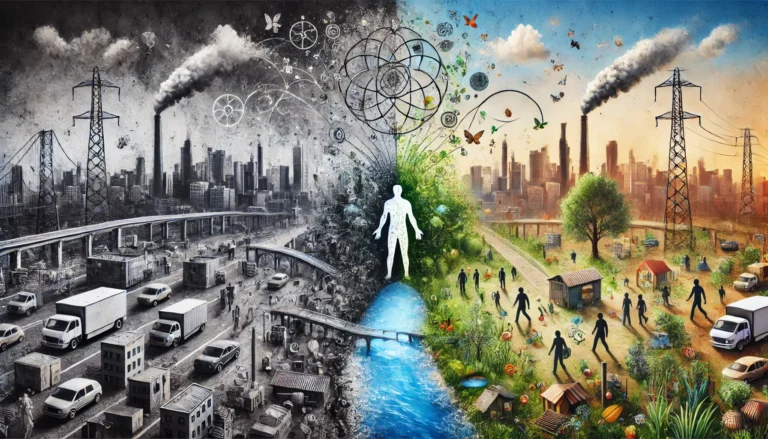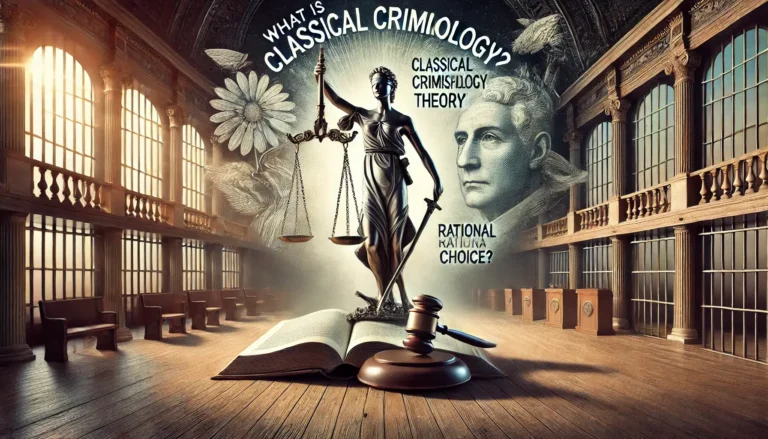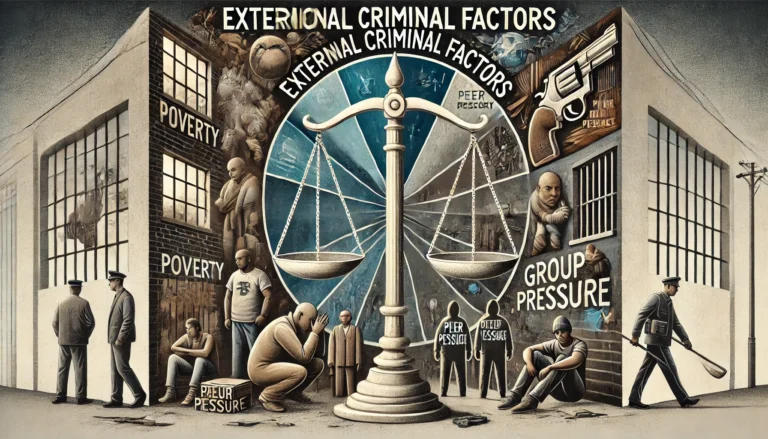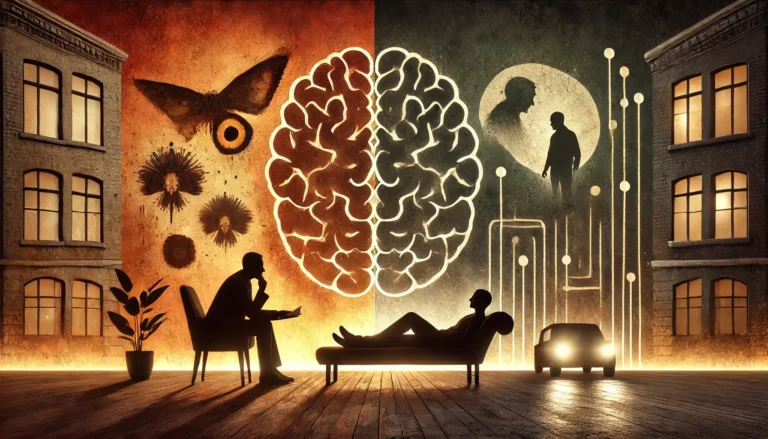The Role of Robert Merton in Criminology: Strain Theory
Introduction
Robert Merton stands as one of the most influential figures in the field of sociology and criminology. Known for his groundbreaking Strain Theory, Merton redefined the way scholars and policymakers understand the causes of deviant and criminal behavior. His work laid a foundational framework that continues to influence criminological research, public policy, and academic thought. This article explores Robert Merton’s contributions to criminology, focusing on his theoretical innovations, the historical context of his work, and the lasting impact of his ideas on contemporary criminological theories and practices.
Early Life and Academic Background of Robert Merton
Before delving into his theories, it is essential to understand the background of Robert Merton. Born in 1910 in Philadelphia as Meyer Robert Schkolnick, Merton adopted his professional name during his early academic career. He studied at Temple University before transferring to Harvard University, where he was mentored by renowned sociologist Talcott Parsons. His academic training in both classical sociology and empirical research methods shaped his later theoretical developments in criminology.
Historical Context: Criminology Before Merton
Prior to Robert Merton’s contributions, criminology was heavily influenced by biological and psychological models. Thinkers such as Cesare Lombroso had emphasized inherent criminal traits, while Freud’s psychoanalytic theories linked crime to internal mental conflicts. However, these perspectives often neglected the broader social and structural forces that influence behavior. It was in this context that Merton introduced a sociological approach that emphasized social structure as a key determinant of deviant behavior.
Merton’s Strain Theory: A Paradigm Shift in Criminology
One of the most significant contributions of Robert Merton to criminology is the Strain Theory, introduced in his 1938 essay “Social Structure and Anomie.” This theory offered a revolutionary perspective on the roots of deviant behavior, arguing that crime is not merely the result of personal failure or pathology but arises from the structure of society itself.
Core Concepts of Strain Theory
- Cultural Goals vs. Institutionalized Means: According to Robert Merton, American society places a high value on material success and upward mobility. However, access to legitimate means of achieving these goals (such as education and employment) is not equally distributed.
- Strain and Anomie: When individuals are unable to achieve culturally approved goals through legitimate means, they experience strain. This strain can lead to anomie—a state of normlessness—and eventually to deviant behavior.
- Modes of Individual Adaptation: Merton outlined five ways individuals adapt to this strain:
- Conformity: Accepting cultural goals and means.
- Innovation: Accepting goals but using illegitimate means (e.g., crime).
- Ritualism: Rejecting goals but adhering to means.
- Retreatism: Rejecting both goals and means (e.g., drug addiction).
- Rebellion: Replacing existing goals and means with new ones.
These adaptations illustrate how social structures can generate different forms of deviance, including criminal behavior.
Impact of Strain Theory on Criminological Thought
Robert Merton’s theory significantly altered the trajectory of criminology. By linking deviance to structural inequality, he introduced a macro-sociological perspective that remains central to modern criminology. His theory laid the groundwork for subsequent developments such as subcultural theory, institutional anomie theory, and general strain theory.
Influence on Later Theorists
- Albert K. Cohen: Expanded on Merton’s ideas by examining how working-class youth respond to strain through the formation of delinquent subcultures.
- Cloward and Ohlin: Developed the Differential Opportunity Theory, arguing that access to illegitimate means also varies across social groups.
- Robert Agnew: Created the General Strain Theory, which incorporates a broader range of stressors and emotional responses to explain deviance.
Each of these theories acknowledges Robert Merton’s foundational role in establishing strain as a central concept in criminological thought.
Applications of Merton’s Theory in Modern Society
Even decades after its inception, Robert Merton’s strain theory continues to be relevant in analyzing contemporary crime and deviance. For example:
- Gang violence in urban areas can often be linked to limited access to education and employment, driving individuals toward illegitimate means of success.
- White-collar crime may also be explained through innovation, where individuals use unethical or illegal practices to achieve corporate or financial goals.
- Cybercrime, including hacking and identity theft, may represent new forms of “innovation” in a digital age.

Critiques of Merton’s Theory
While influential, Robert Merton’s theory has not been without criticism.
- Overemphasis on economic success: Critics argue that Merton’s focus on material goals neglects other motivations for crime, such as thrill-seeking or emotional satisfaction.
- Neglect of individual agency: The theory may underestimate the role of personal choice and psychological factors.
- Gender and cultural bias: Merton’s original framework is based on American society in the early 20th century and may not be universally applicable.
Despite these critiques, the theory remains a cornerstone of sociological criminology.
Robert Merton’s Broader Contributions to Sociology
In addition to his strain theory, Robert Merton contributed several key concepts to the field of sociology that have implications for criminology:
- Self-fulfilling prophecy: A prediction that causes itself to become true, relevant in understanding how labeling can lead to deviance.
- Role theory: Helps explain how conflicting social roles can create stress that contributes to deviant behavior.
- Middle-range theories: Encouraged the development of testable hypotheses within criminological research.
Legacy of Robert Merton in Criminology
The legacy of Robert Merton in criminology is profound. His approach to deviance through a sociological lens helped shift the focus from individual pathology to structural causes of crime. His work continues to inspire researchers, educators, and policymakers in addressing complex social issues such as poverty, inequality, and criminal justice reform.
Academic institutions around the world continue to teach Robert Merton’s theories as part of core sociology and criminology curricula. His ideas are also reflected in modern public policy, particularly in initiatives aimed at reducing structural inequality and expanding access to opportunity.
Merton’s Views on Social Inequality and Justice
Robert Merton was not only concerned with deviance as a social phenomenon but was deeply invested in the understanding of social inequality. He believed that structural barriers imposed by class systems, race, and neighborhood disadvantages created different experiences of strain. These disparities influence how individuals perceive their ability to achieve societal goals, especially in capitalist societies where material success is idolized. Merton’s work indirectly advocates for social justice, urging policymakers to address the root causes of inequality to reduce deviance and criminality.
Comparative Analysis: Merton vs. Other Criminological Theories
When comparing Robert Merton’s Strain Theory to other major criminological frameworks, several distinctions emerge. For instance:
- Sutherland’s Differential Association Theory emphasizes that criminal behavior is learned through interaction with others. Unlike Merton, who focuses on structural inequality, Sutherland prioritizes socialization and peer influence.
- Travis Hirschi’s Social Bond Theory suggests that strong social bonds prevent criminal behavior. While Merton sees deviance as a product of societal pressure and blocked opportunities, Hirschi sees it as a failure of social integration.
These comparisons highlight the unique contribution of Robert Merton in shifting the conversation from individual relationships to societal pressures and institutional access.

Policy Implications: Merton’s Theory in Criminal Justice Reform
Robert Merton’s Strain Theory continues to influence contemporary criminal justice policies. For instance, initiatives aimed at improving access to education, employment, and housing are direct responses to the structural barriers Merton described. Programs such as community policing, youth outreach, and rehabilitation-based sentencing are rooted in the understanding that reducing strain can lower crime rates. Merton’s ideas offer a sociologically grounded blueprint for building safer, more equitable societies.
Gendered Perspectives and Strain Theory
Modern criminologists have applied feminist critiques to Merton’s theory, noting that it originally focused predominantly on male experiences of deviance. Women may respond to strain differently or face unique forms of strain (e.g., gender-based violence, limited mobility). Scholars like Meda Chesney-Lind argue that Strain Theory needs adaptation to account for gendered pathways into crime. This development shows how Robert Merton’s work remains dynamic, open to reinterpretation and expansion across demographic lines.
Real-World Case Studies and Merton’s Framework
Numerous empirical studies have tested and validated Merton’s theory. For example:
- A study on urban youth in New York City found that those who lacked access to quality schools and jobs were more likely to engage in gang activity as a means of achieving social recognition and financial gain—mirroring Merton’s concept of “innovation.”
- In developing countries, researchers have applied Strain Theory to understand how economic disparity and weak institutions contribute to the rise in organized crime, corruption, and even terrorism.
These case studies illustrate how Robert Merton’s theoretical lens continues to provide valuable insights into complex social issues around the world.
Conclusion
Robert Merton revolutionized the study of crime and deviance by introducing a structural perspective that emphasized the role of societal norms and inequalities. His Strain Theory remains one of the most cited and applied theories in criminology. By focusing on the relationship between cultural goals and institutional means, Merton provided a framework that continues to shape both theoretical discourse and practical approaches to crime prevention. His enduring influence underscores the importance of understanding crime not only as a personal failing but as a reflection of deeper social structures and inequalities.
References (APA Style)
Agnew, R. (1992). Foundation for a general strain theory of crime and delinquency. Criminology, 30(1), 47–87. https://doi.org/10.1111/j.1745-9125.1992.tb01093.x
Cloward, R. A., & Ohlin, L. E. (1960). Delinquency and opportunity: A theory of delinquent gangs. Free Press.
Cohen, A. K. (1955). Delinquent boys: The culture of the gang. Free Press.
Merton, R. K. (1938). Social structure and anomie. American Sociological Review, 3(5), 672–682. https://doi.org/10.2307/2084686
Merton, R. K. (1968). Social theory and social structure (enlarged ed.). Free Press.
Shoham, S. G., Knepper, P., & Kett, M. (2010). International handbook of criminology. CRC Press.
Williams, F. P., & McShane, M. D. (2014). Criminological theory. Pearson.
